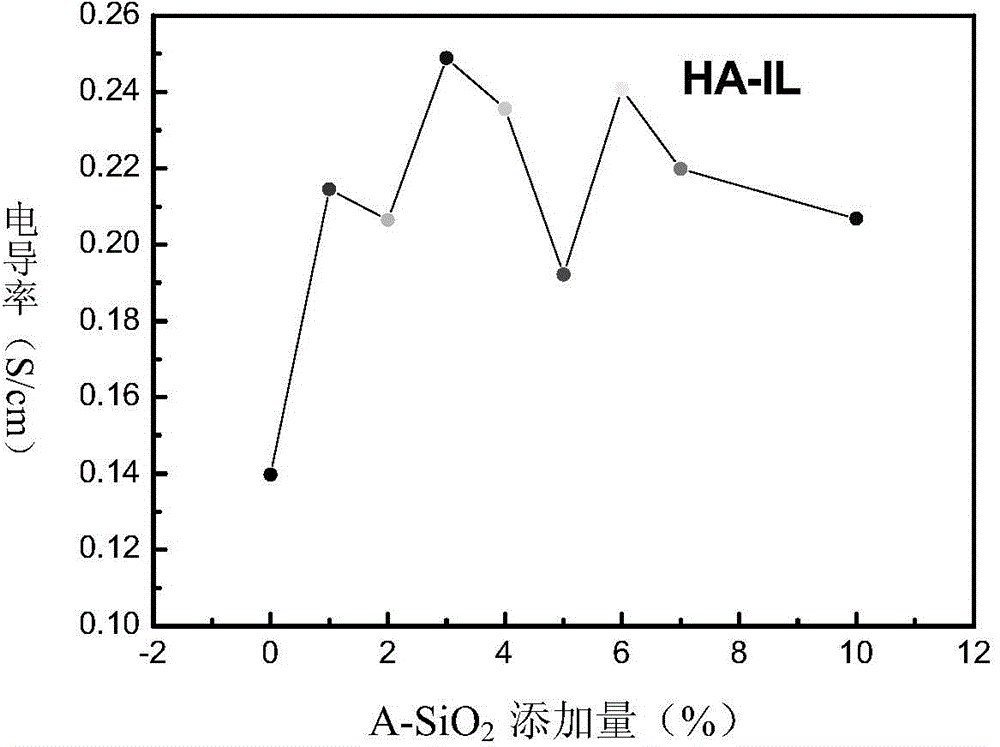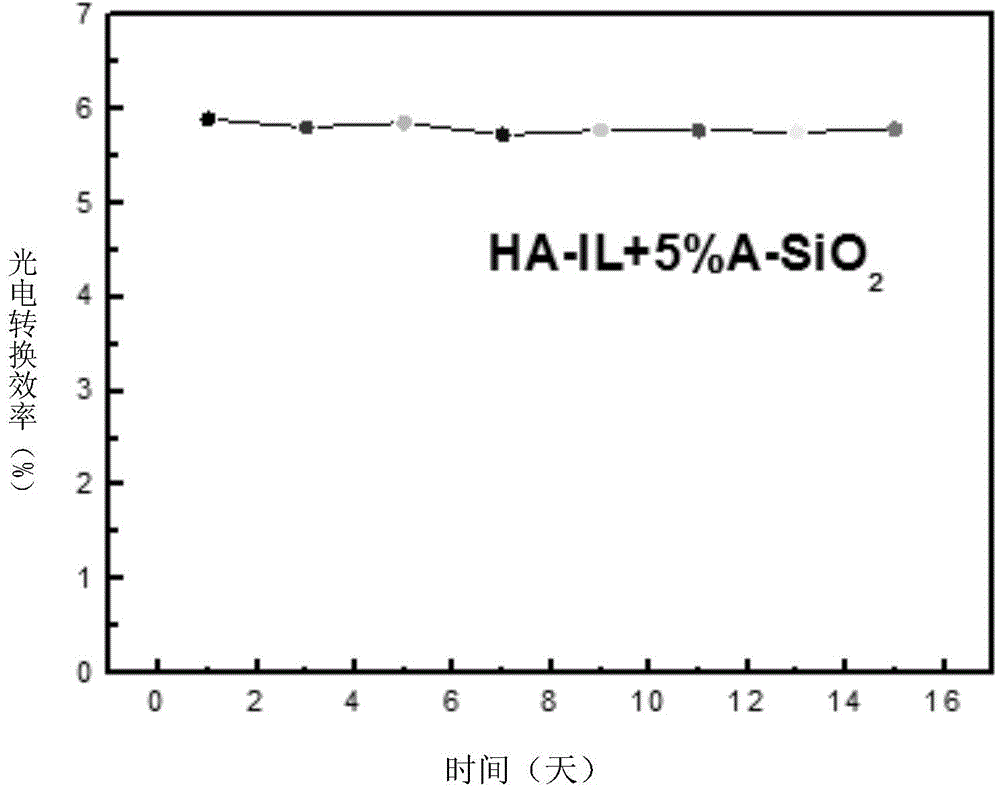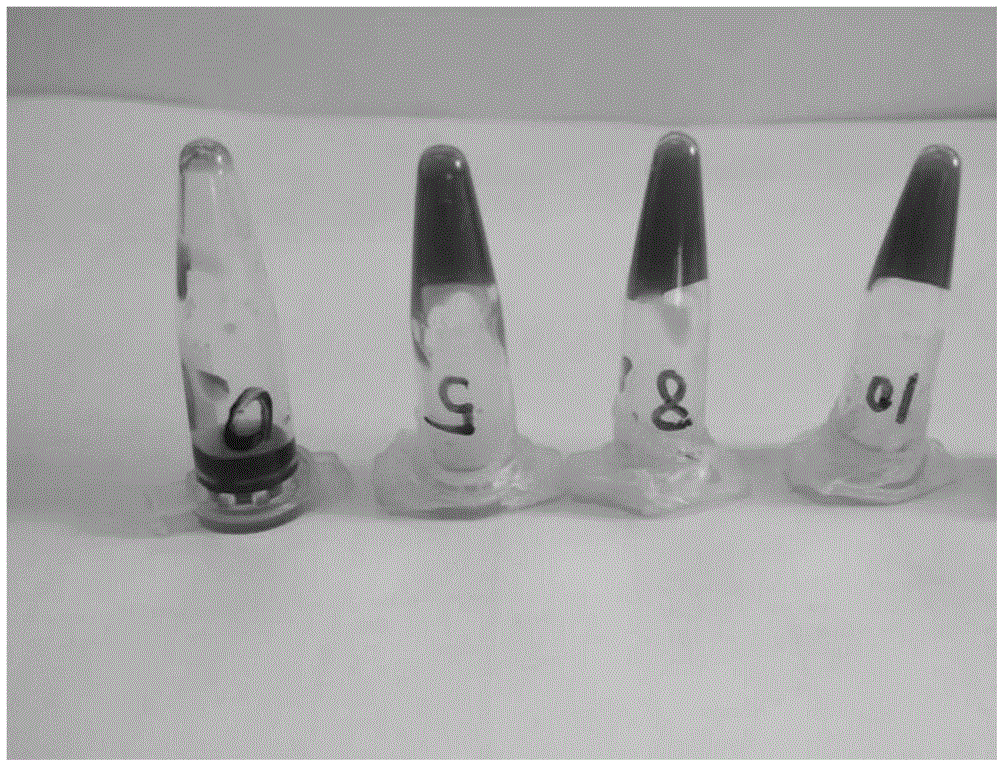Functional nanoparticle and preparation method and application thereof
A nanoparticle, inorganic nanoparticle technology, applied in nanotechnology, nanotechnology, nanotechnology for materials and surface science, etc., can solve problems such as unfavorable photo-generated electron injection, easy precipitation of solid additives, affecting electrolyte performance, etc. Achieve the effect of improving photoelectric conversion efficiency, enhancing ion mobility, and low price
- Summary
- Abstract
- Description
- Claims
- Application Information
AI Technical Summary
Problems solved by technology
Method used
Image
Examples
Embodiment 1
[0042] Example 1. Preparation of polyamino-modified silica nanoparticle additive, electrolyte and dye-sensitized solar cell:
[0043] 1. Preparation of polyamino-modified silica nanoparticle additives:
[0044] 1) Preparation of APTS (3-aminopropyltriethoxysilane) prepolymer: Add 0.3mol APTS to a 250mL one-necked bottle, add 0.2mol water while stirring, and continue stirring at room temperature for 24h; then, add 0.4g calcium hydroxide , after stirring for 30 minutes, rotary steaming at 80°C for 1 hour, suction filtration to obtain the supernatant, and APTS prepolymer;
[0045] 2) APTS prepolymer modified SiO 2 Inorganic nanoparticles: Add 2g of SiO to a 250mL three-necked bottle 2 and 100mL toluene, N 2 Under the atmosphere, stir for 30min, add 4g APTS prepolymer dropwise, spin dry after stirring at room temperature for 48h; then use CH 2 Cl 2 Washed three times, then rotary evaporated at 40°C, spin-dried and baked in an oven at 85°C for 48 hours to obtain polyamino-modi...
Embodiment 2
[0057] Example 2, preparation of polycyano-modified silica nanoparticle additive, electrolyte and dye-sensitized solar cell:
[0058] The method for preparing polycyano-modified silica nanoparticle additives is the same as in Example 1, except that APTS is replaced by 3-aminopropyltrimethoxysilane (CPTS), marked as CN-SiO 2 . The methods for preparing the nanocomposite gel electrolyte and the dye-sensitized solar cell are the same as in Example 1.
Embodiment 3
[0059] Example 3. Preparation of silica nanoparticle additives, electrolytes and dye-sensitized solar cells co-modified by polyamino groups and cyano groups:
[0060] The method for preparing the silica nanoparticle additive modified by polyamino group and cyano group is the same as in Example 1, only APTS is replaced by APTS and CPTS, the molar ratio of the two is 1:1, and the molar sum of the two is 0.3mol , labeled NH 2 &CN-SiO 2 . The methods for preparing the nanocomposite gel electrolyte and the dye-sensitized solar cell are the same as in Example 1.
PUM
 Login to View More
Login to View More Abstract
Description
Claims
Application Information
 Login to View More
Login to View More - R&D
- Intellectual Property
- Life Sciences
- Materials
- Tech Scout
- Unparalleled Data Quality
- Higher Quality Content
- 60% Fewer Hallucinations
Browse by: Latest US Patents, China's latest patents, Technical Efficacy Thesaurus, Application Domain, Technology Topic, Popular Technical Reports.
© 2025 PatSnap. All rights reserved.Legal|Privacy policy|Modern Slavery Act Transparency Statement|Sitemap|About US| Contact US: help@patsnap.com



